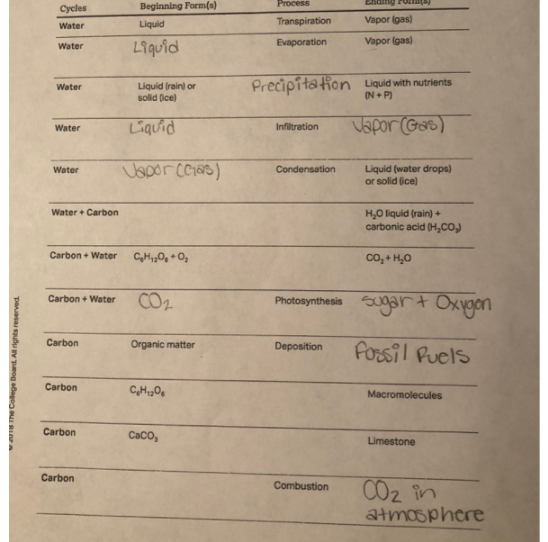Table: Transformations and processes in the water and carbon cycles

Answer: Transformations and processes in the water & carbon cycle.

You might also like to view...
The application called multiple strand displacement amplification is a powerful tool because
A. it provides errorless sequencing results for that microorganism. B. it provides data on the pathogenic nature of the microorganism. C. it identifies the transcriptome of the microorganism. D. it allows single-cell genomic sequencing that can analyze uncultivated microorganisms.
True or false? _____ Mutations always result in negative effects on the organism. _____ Mutations are always large-scale (e.g., involving at least 10,000 base pairs of DNA)
DNA). _____ Mutations are never large-scale (e.g., involving at least 10,000 base pairs of DNA). _____ Most mutations are caused by an environmental pollutant. _____ Mutation rates are constant in all organisms. _____ Mutation rates are higher in men than in women because men have higher metabolic rates than women. _____ Mutation occurs every time a cell divides. _____ All mutations provide genetic variation on which evolution may act. What will be an ideal response?
Exchange of genetic material among different species is called
A. homolgous gene exchange. B. horizontal gene transfer. C. exon shuffling. D. genetic recombination. E. exon shuffling and or genetic recombination.
Why do prokaryotes not conduct the process of the citric acid cycle?
a. They do not possess mitochondria. b. They do not possess a cytoplasm. c. They do not possess a Golgi body. d. They do conduct the citric acid cycle.